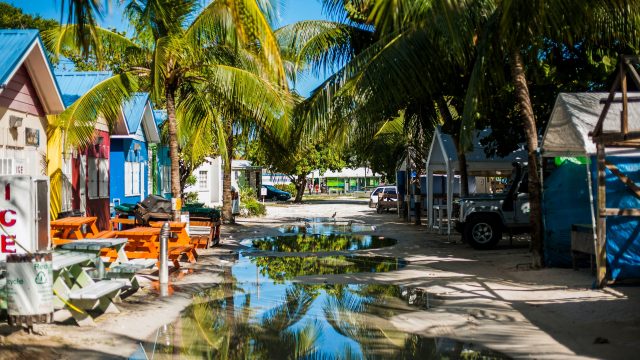Green bonds & natural capital: part 2

Bob Buhr is the Director of Green Planet Consulting, and an Honorary Research Fellow at the Centre for Climate Finance and Investment at Imperial College Business School. In this, the second of a series of posts exploring green bonds and natural capital, he argues that green bonds have reached a tipping point - and questions whether natural capital bonds could do the same.
In our previous post we discussed why Green Bonds weren’t a good model for Natural Capital funding. Green Bonds, like any other bond, requires a pool of funds to cover interest and principal payments. But the whole point of raising funds for natural capital is to protect or restore it. Generating cash flows at scale from natural capital requires using the natural capital one is trying to protect.
Raising money from nature
There have been some creative attempts to get around this problem. The International Finance Corporation has issued what are called “forest bonds,” where the proceeds are being used for forest conservation in Kenya. In this case, interest is being paid in the form of cash or carbon credits. Even here, though, there was a need for additional support--from BHP, a large mining company, which pays the cash interest. Moreover, the principal will be paid upon maturity by the IFC--not Kenya, where the forests in question are being restored. Thus far, however, this remains the only substantial such deal.
Another approach has been to potentially rely on tourism and use revenues, as has been considered for “reef bonds,” where bond proceeds would help maintain the Great Barrier Reef. In this case, interest would be generated from tourist revenues and fees from users of the reef. How workable this concept might be remains to be seen, however, and it’s unclear how much reliance can be placed on the tourist trade in the event of natural catastrophes such as significant weather events, as Caribbean nations can testify. Moreover, supporting the growth of the tourist trade is not necessarily the best idea in terms of trying to reduce carbon generation--although, in the case of the Great Barrier Reef, that tourism is already taking place.
“ The whole point of raising funds for Natural Capital is simply to preserve, or restore, some Natural Capital that actually exists, not to develop it.”
Another approach, used recently with agriculture in several countries, has been to aggregate the production of small landholders into meaningful cash streams to pay interest and principal on loans. The approach here is hardly novel; the global securitization market does the same thing, in substantial scale. This has been tested successfully in several markets. However, the scope of these projects is invariably small and local, and it’s not clear that these can be scaled up sufficiently to materially address large-scale natural capital preservation and restoration.
Finally, there has been some progress in developing “resilience bonds,’ where the proceeds are to be used for developing some resilience to natural catastrophes such as floods and storms--primarily through the funding of infrastructure projects. However, it is not a major leap to consider natural capital restoration as having equivalent value--replanting coastal mangroves in flood-prone countries, for example.
The end goal here is not principally natural capital restoration or preservation: it’s mainly to reduce insurance losses in the event of catastrophes. And again, it’s unlikely that potentially affected countries can issue such bonds on their own. It’s insurance companies that issue such bonds, with reduced premiums to areas that adopt the mitigation measures to reduce damage costs. We have yet to see this concept applied to natural capital restoration but it could be--but it requires a third party issuer. Nonetheless, the concept of “natural infrastructure” has been gaining some currency, as a recent report from WRI can attest.
A confusion at the heart of natural capital bonds
This creates something of a conundrum. In many cases, the whole point of raising funds for Natural Capital is simply to preserve, or restore, some Natural Capital that actually exists, not to develop it. These funds must come from elsewhere, then. Which suggests that the logical issuers of something that could be called a Natural Capital Bond is likely to be either a government or a supranational organization (such as the IFC) at some level. Private corporations on their own are unlikely to issue and service debt that is not going to contribute to cash flow generation.
If this is the case, why bother with issuing special debt for Natural Capital preservation, or restoration in the first place? Rather, it would surely be more economical for governments simply to get on with the job directly, and to fund these activities from general (or targeted) tax revenues, or from external sources such as NGOs or supranational organizations.

And yet, and yet….even though Green Bonds are still a very, very small subset of the global bond market, there is virtually no one who works in finance these days who doesn’t know what a Green Bond is, or what it’s used for. Hardly a day goes by without some media coverage of some Green Bond, or the Green Bond market. Five years ago this was a novel concept to anyone who hadn’t bought one from The World Bank or the EIB.
Today, Green Bond issuance is such a regular event it often passes unnoticed, even by sub-investment grade emerging market sovereigns. “Green Finance” has become a hot topic, and is now seen as a necessary concept for any transition to a lower carbon world, driven by perceptions of the scale and scope of the financing that needs to take place in order to fund such a transition. “Green Bonds” is not only a useful concept to describe a wide range of bonds; it has now become an embedded concept in financial markets.
So perhaps there is, indeed, an argument for the issuance of some Natural Capital Bonds, from national governments, or entities such as the International Finance Corporation or other supranational organizations. If such issuance does for Natural Capital what Green Bonds has done for perceptions of the desirability, indeed the necessity, of developing financing tools for a “Green Transition,” then this should be actively encouraged, indeed applauded. Quick, someone call France!
Bob Buhr is the Director of Green Planet Consulting, and an Honorary Research Fellow at the Centre for Climate Finance and Investment at Imperial College Business School.
Photo by Ales Krivec on Unsplash


